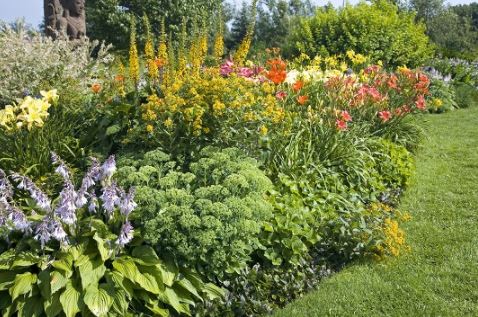The beauty of perennials is that they come back year after year in most climates. They may cost more than annuals, but they take a lot less work. How do you choose the best perennials for your garden? Here are three tips from Gutter Helmet, manufacturer of the best rain gutter covers, to help you choose the right perennial for your home and garden.
Know the Sun and Your Zone
Some plants like full sun and others partial. Look at your garden and determine if the area gets four or less hours of sun a day, if it’s in the sun all day, or something in between. Buying a plant that needs more or less sun than you have will yield disappointing results.
If you want your perennials to grow year after year, know your Hardiness Zone. The zone map gives you the average extreme minimum temperatures; you shouldn’t choose plants that won’t work in your zone. Finally, if your garden is against your house and that wall gets a lot of direct sunlight, it may radiate too much heat for some plants to tolerate, so keep that in mind as well.
Design Your Space
As you look at your garden, start thinking about the space in two ways. First, if you want blooms from spring until fall, look at how often and when various perennials blossom. Then look at the height and width of the plants. Most plants are sold smaller than they will be a few years from now, so look at the tag to understand how high and wide the plant will be at maturity.
As you design your space, think in layers, from the back of your garden to the front. Many people’s gardens are against their house. Shrubbery is a great way to have a consistent green backdrop as many stay green year-round. From there, plant your taller perennials in the back, being sure to space them appropriately so they won’t crowd each other out. Not only does the plant need room to grow, so do the roots. Space them out according to the recommendations on the plant’s tag.
Soil, Mulch & Water
Depending where you are in the country, your soil may be sand, clay or dirt. Some plants do better in one soil type or another. Buying perennials that grow well in the type of soil you have will yield the best results with the least expense and effort. Alternately, you can buy the right type of soil, dig up your garden area and add the new soil.
No matter what type of plants you choose, you’ll want to mulch your garden area. There are many different types of mulch, all of which serve the purpose of helping to keep the soil damp. If you don’t already have mulch, plan to buy enough to cover the area at least two inches.
Look at the area you’re planting after a rain. Does the dirt appear to have a line in it? Look up. Do you have gutters? If you do and you notice a line in the dirt, they’re probably clogged. This will not help your plants grow; in fact, it may break off delicate flowers before they have a chance to bloom. If you’re tired of cleaning your gutters, consider getting gutter protection from leaves and other debris that clogs your gutters. Gutter Helmet has local installers who can help you. Call (800) 824-3772 to be connected to your local Gutter Helmet dealer.


